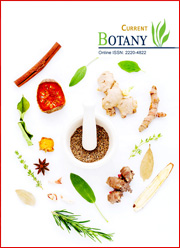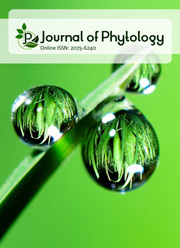Medicinal Plants used for traditional healing practices among the tribal communities of Ri-Bhoi District, Meghalaya, India
DOI:
https://doi.org/10.25081/cb.2025.v16.9096Keywords:
Meghalaya, Medicinal Plant, Ethnomedicine, Traditional healing practices, Ri- Bhoi districtAbstract
This study aimed to document and analyze the medicinal plants used by tribal communities in the Ri-Bhoi district of Meghalaya, India, and to evaluate their significance in traditional healing practices. Through the collection of ethnomedicinal knowledge using standard questionnaires and group interviews, the research identified 50 medicinal plant species across 35 families employed in treating 38 common ailments. The study assessed the use value (UV), informant consensus factor (ICF), and fidelity level (FL) of these plants to gauge their importance and effectiveness. The analysis revealed that Euphorbia neriifolia L. holds the highest use value (UV=0.36), indicating its frequent and significant use among local traditional healers. This plant, along with others identified, demonstrates a broad application in addressing various health conditions prevalent in the region. The study also noted a substantial degree of consensus among informants regarding the therapeutic uses of these plants, with ICF values ranging from 0.33 to 0.74. This suggests a strong agreement on the medicinal applications of specific plants for distinct disease categories. The fidelity levels (FL) of the medicinal plants varied between 33.33% and 100%, reflecting both the reliability and the degree of acceptance of these plants in traditional medicine. The high fidelity values for certain plants underscore their critical role in local health practices. Overall, this study underscores the rich ethno medicinal knowledge embedded within the Ri-Bhoi district’s tribal communities and highlights the need for ongoing documentation and preservation of this traditional wisdom. The findings contribute valuable insights into the use and significance of local flora in traditional healing, which could inform future research and conservation efforts.
Downloads
References
Arora, A., & Lohar, M. (2019). Comparative Study of Informant Consensus Factor Ethno-functional Foods among Bhil, Meena, Garasia and Damor Tribes of Southern Rajasthan, India. Studies on Ethno-Medicine, 13(2), 71-77.
Asiimwe, S., Namukobe, J., Byamukama, R., & Imalingat, B. (2021). Ethnobotanical survey of medicinal plant species used by communities around Mabira and Mpanga Central Forest Reserves, Uganda. Tropical Medicine and Health, 49, 52. https://doi.org/10.1186/s41182-021-00341-z
Bhat, P., Hedge, G. R., Hedge, G., & Mulgund, G. S. (2013). Ethnomedicinal plants to cure skin diseases an account of the traditional knowledge in the coastal parts of central Western Ghats, Karnataka, India. Journal of Ethnopharmacology, 151(1), 493-502. https://doi.org/10.1016/j.jep.2013.10.062
Borgohain, M. P., Teron, R., & Tamuli, A. K. (2016). Ethnomedicinal plants of Tai phake tribe of upper Brahmaputra alley in Assam, India. Pleione, 10(1), 123-133.
Caunca, E. S., & Ballinado, L. O. (2021). Determination of Use-Value, Informant Consensus Factor,and Fidelity Level of Medicinal Plants Used in Cavite, Philippines. Asian Journal of Biological and Life Sciences, 10(2), 443-453. https://doi.org/10.5530/ajbls.2021.10.59
Choudhury, P. R., Choudhury, M. D., Ningthoujam, S. S., Das, D., Nath, D., & Talukdar, A. D. (2015). Ethnomedicinal plants used by traditional healers of North Tripura district, Tripura, North East India. Journal of Ethnopharmacology, 166, 135-148. https://doi.org/10.1016/j.jep.2015.03.026
Das, A. J. (2012). A study of antibacterial activity of ethanolic extracts and aqueous extracts of Leucas longifolia (Doron) leaves against Eschreiashia coli. International Research Journal of Pharmacy, 3(1), 138-139.
Ezhil, V. M., Velmurugan, S., & Ravikumar, R. (2016). Emic and Ethnomedicinal studies on medicinal plants in two sacred groves at Pudukottai District Tamil Nadu. Advances in Applied Science Research, 7(2), 123-127.
Friedman, J., Yaniv, Z., Dafni, A., & Palewitch, D. (1986). A preliminary classification of the healing potential of medicinal plants, based on a rational analysis of an ethnopharmacological field survey among Bedouins in the Negev Desert, Israel. Journal of Ethnopharmacology, 16(2-3), 275- 287. https://doi.org/10.1016/0378-8741(86)90094-2
Gairola, S., Sharma, S., & Bedi, Y. S. (2014). A cross cultural analysis of Jammu, Kashmir and Ladakh (India) Medicinal Plant Use. Journal of Ethnopharmacology, 155(2), 925-986. https://doi.org/10.1016/j.jep.2014.06.029
Gogoi, P., & Nath, N. (2021). Indigenous knowledge of ethnomedicinal plants by the Assamese community in Dibrugarh District, Assam, India. Journal of Threatened Taxa, 13(5), 18297-18312. https://doi.org/10.11609/jott.6772.13.5.18297-18312
Haridasan, K., & Rao, R. R. (1985-1987). Forest flora of Meghalaya. (Vol. I&II). Dehradun, India: Bishen Singh Mahendra Pal Singh.
Harshberger, J. W. (1896). The purposes of Ethno-botany. Botanical Gazette, 21(3), 146-154.
Hassan, N., Nisar, M., Kakar, S. U. R., Hassan, F. U., Zhong, Z., Nong, L., Khan, M. I., Shuaib, M., & Wang, D. (2017). Determination of informant consensus factor of medicinal plants used as therapy in district Dir Lower Pakistan. Journal of Medicinal Plants Studies, 5(4), 183-188.
Joseph, J., & Kharkongor, P. (1981). A preliminary ethnobotanical Survey in the Khasi and Jaintia hills, Meghalaya. In S. K. Jain (Ed.), Glimpses of Indian Ethnobotany (pp. 115-123). New Delhi, India: Oxford and IBH Publishing Co.
Kar, A., & Barthakur, S. K. (2008). Medicinal Plants used against dysentery, diarrhoea and cholera by the tribes of erstwhile Kameng district of Arunachal Pradesh. Natural Product Radiance, 7(2), 176-181.
Kar, A., & Borthakur, S. K. (2015). Ethnobotanical knowledge of the tribes of erstwhile Kameng district of Arunachal Pradesh. Ethnobotany, 27, 8-15.
Kuddus, M. R., Rumi, F., Kaisar, M. A., & Hasan, C. M. (2016). Sesquiterpene and Phenylpropanoids from Curcuma longa. Bangladesh Pharmaceutical Journal, 13(2), 31-34.
Kumar, Y., Fancy, S., & Rao, R. R. (1987). Further contribution to ethnobotany of Meghalaya: Plants by War Jaintia of Jaintia Hill district. Journal of Economic and Taxonomic Botany, 11, 71-76.
Kvist, L. P., Andersrn, M. K., Stagegaard, J., Hesselsoe, M., & Llapapasca, C. (2001). Extraction from Woody Forest Plants in Flood plain Communities in Amazonian Peru: Use, Choice, Evaluation and Conservation Status of Resources. Forest Ecology and Management, 150(1-2), 147-174. https://doi.org/10.1016/S0378-1127(00)00688-5
Mao, A. A., & Hynniewata, T. M. (2000). Floristic diversity of North East India. Journal of the Assam Science Society, 41, 255-266.
Navneet, A., & Bhandari, B. S. (2021). Ethnobotanical plants used in health care and traditional practices by local inhabitants (Gujjars) of Rajaji Tiger Reserve, Uttarakhand, India. Indian Journal of Traditional Knowledge, 20(1), 91-105.
Pala, N. A., Sarkar, B. C., Shukla, G., Chettri, N., Deb, S., Bhat, J. A., & Chakravarty, S. (2019). Floristic composition and utilization of ethnomedicinal plant species in home gardens of the Eastern Himalaya. Journal of Ethnobiology and Ethnomedicine, 15, 14. https://doi.org/10.1186/s13002-019-0293-4
Phillips, O., Gentry, A. H., Reynel, C., Wilkin, P., & Galvez-Durand, B. (1994). Quantitative ethnobotany and Amazonian conservation. Conservation Biology, 8(1), 225-248. https://doi.org/10.1046/j.1523-1739.1994.08010225.x
Ralte, L., Sailo, H., & Sing, Y. T. (2024). Ethnobotanical study of medicinal plants used by the indigenous community of the western region of Mizoram, India. Journal of Ethnobiology and Ethnomedicine, 20, 2. https://doi.org/10.1186/s13002-023-00642-z
Reang, M., Banik, B., Debbarma, S., & Datta, B. K. (2023). Quantitative assessment of ethnobotanical resources and medicinal plants utilization patterns in Tripura, India. Journal of Bioresources, 10(1), 14-24.
Samati, H. (2006). An Ethnomedicinal study of Jaintia Hills District, Meghalaya, India. Doctoral Dissertation, Gauhati University.
Sanglyne, M. W., Dirborne, C. M., & Nongkynrih, D. H. (2021). Ethnomedicinal plants used by the tribal inhabitants of two of the wettest places on earth: An overview. International Journal of Botany Studies, 6(2), 125-134.
Singh, A. G., Kumar, A., & Tewari D. D. (2012). An ethnobotanical survey of medicinal plants used in Teraiforest of western Nepal. Journal of Ethnobiology and Ethnomedicine, 8, 19. https://doi.org/10.1186/1746-4269-8-19
Singh, B., Borthakur, S. K., & Phukan, S. J. (2014). A survey of ethnomedicinal plants utilized by the indigenous people of Garo Hills with special reference to the Nokrek Biosphere Reserve (Meghalaya). Journal of Herbs, Species & Medicinal Plants, 20(1), 1-30. https://doi.org/10.1080/10496475.2013.819476
Subba, Y., Hazra, S., & Rahaman, C. H. (2023). Medicinal plants of Teesta Valley, Darjeeling district, West Bengal, India: A quantitative ethnomedicinal study. Journal of Applied Pharmaceutical Science, 13(1), 092-108. https://doi.org/10.7324/JAPS.2023.130109
Sultana, A., Hossain, M. J., Kuddus, M. R., Rashid, M. A., Zahan, M. S., Mitra, S., Roy, A., Alam, S., Sarker, M. M. R., & Mohamed, I. N. (2022). Ethnobotanical Uses, Phytochemistry, Toxicity and Pharmacological properties of Euphorbia neriifolia Linn. against Infectious Diseases: A Comprehensive Review. Molecules, 27(14), 4374. https://doi.org/10.3390/molecules27144374
Troter, R. T., & Logan, M. H. (1986). Informant census: a new approach for identifying potentially effective medicinal plants. In L. N. Etkin (Ed.). Plants and Indigenous Medicine and Diet (pp. 91-112) New york, UK: Routledge. https://doi.org/10.4324/9781315060385
Tynsong, H., Dkhar, M., & Tiwari, B. K. (2012). Traditional knowledge-based management and utilization of bio- resources by War Khasi tribe of Meghalaya, North -East India. Indian Journal of Innovations Developments, 1(3), 162-174.
WHO. (2002). World Health Organization WHO Traditional Medicine Strategy 2002-2005. World Health Organization, Geneva.
Zenderland, J., Hart, R., Bussmann, R. W., Zambrana, N. Y. P., Sikharulidze, S., Kikvidze, Z., Kikodze, D., Tchelidze, D., Khutsishvili, M., & Batsatsashvili, K. (2019). The Use of “Use Value”: Quantifying Importance in Ethnobotany. Economic Botany, 73(3), 293-303. https://doi.org/10.1007/s12231-019-09480-1
Published
How to Cite
Issue
Section
Copyright (c) 2025 Sumana Paul, Mautushi Das

This work is licensed under a Creative Commons Attribution-NonCommercial 3.0 Unported License.



 .
.